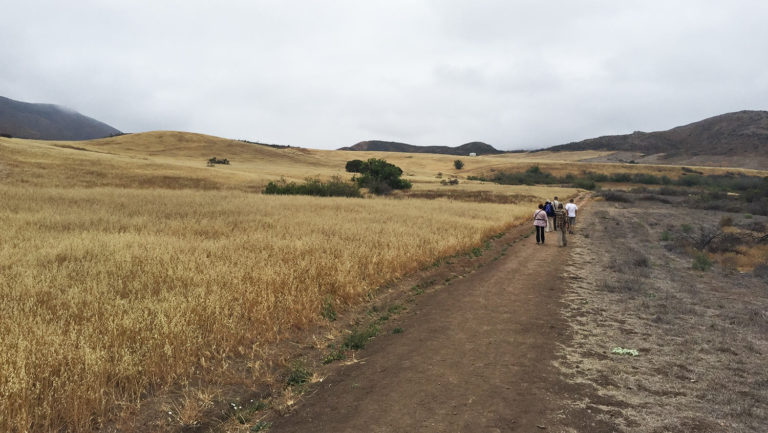
Last weekend I had the pleasure of going on an annual birding trip to Rancho Sierra Vista / Satiwa led by Richard (Dick) Barth. Rancho is one of the last intact ranches from the middle of the 20th century and is nestled near the Santa Monica Mountains. This bird walk was organized by the San Fernando Valley Audubon.
I got an early start, drove about an hour, and met the group at the gated entrance of the ranch at 7:30AM. Dick leads a bird walk here each year right at the end of Spring. The June gloom was real and the sky was filled with clouds for the entire walk. With the promise of possible Lazuli Buntings, Blue Grosbeaks, and more, I was anxious to begin birding. After introducing myself to everyone, we waited a few minutes for the gates to be unlocked and for Dick to give us an overview of the day. The plan was to drive down the main road to the first parking lot, get out and walk a few of the trails, then continue to the main parking lot (while looking for birds on the way) where most of the trail walking would occur.
From the first parking lot we checked out a few trees looking for Hooded Orioles. Our leader was able to recognize their call, but we only got fleeting glimpses of them through the thick foliage of the trees.
After exhausting the visible birds in the oriole tree, we were instructed to continue down the main road in our cars following the leader and be on the lookout for birds on either side. We only made it a short distance down the road before cars began to stop (to the dismay of people behind us) and people started pointing and getting out of their vehicles. Somehow, a small Blue Grosbeak was spotted on a green tree near the road. After the procession of angry drivers passed our group we ran closer to get a better look at the bird. This was very exciting for me because it was a lifer! We saw both male and female versions. Blue Grosbeaks are easy to identify by their large silver beaks and chestnut wing bars (which can barely be seen in my photo).

We reached the final driving destination, parked, and started our walk. The first notable bird we saw was spotted by accident, it was two Lawrence’s Goldfinches. Another lifer for me, the bright yellow coloring and pretty plumage was a treat to look at.

Walking along the nature trail, we spotted numerous Ash-throated Flycatchers, Cliff Swallows, Nanday Parakeets, House Finches, towhees, bluebirds, and kingbirds.
Here is a House Wren that we spotted holding a praying mantis in a bush near its nest.

The effects of the California mega drought was very apparent here. Brown fields and shrubs everywhere you look. I cross my fingers that the el niño is long and real and that it brings a heavy rainy season that we desperately need.
For a full list of the birds we saw on our trip see the eBird checklist.
